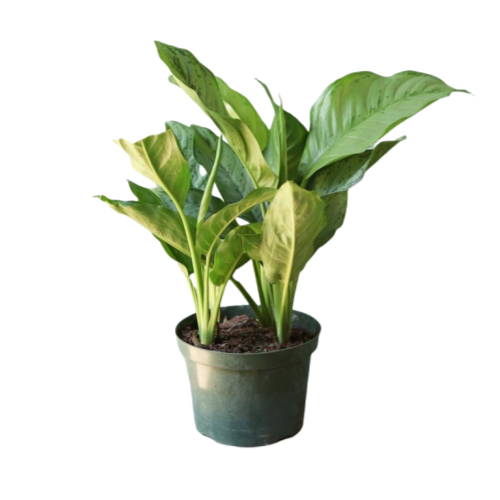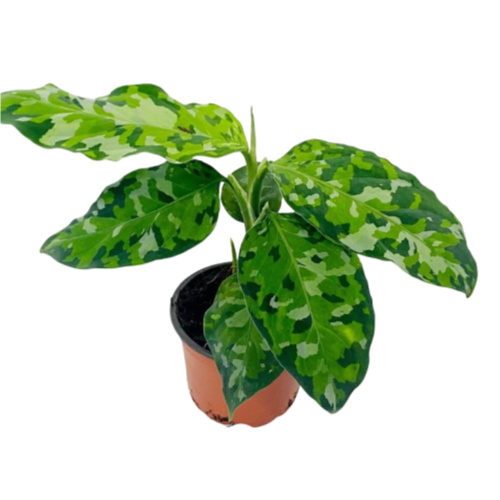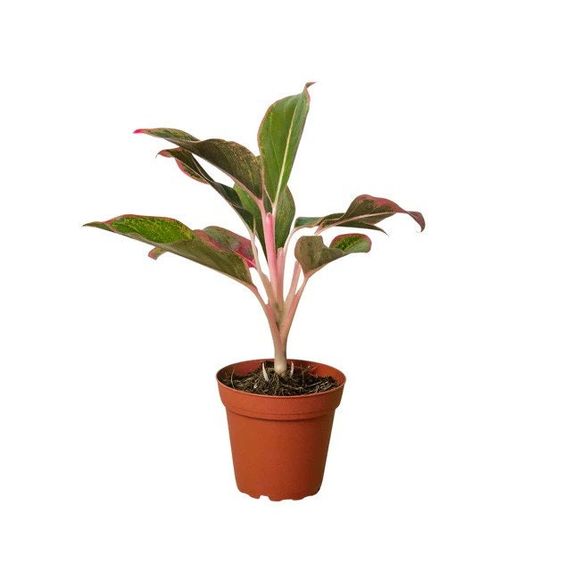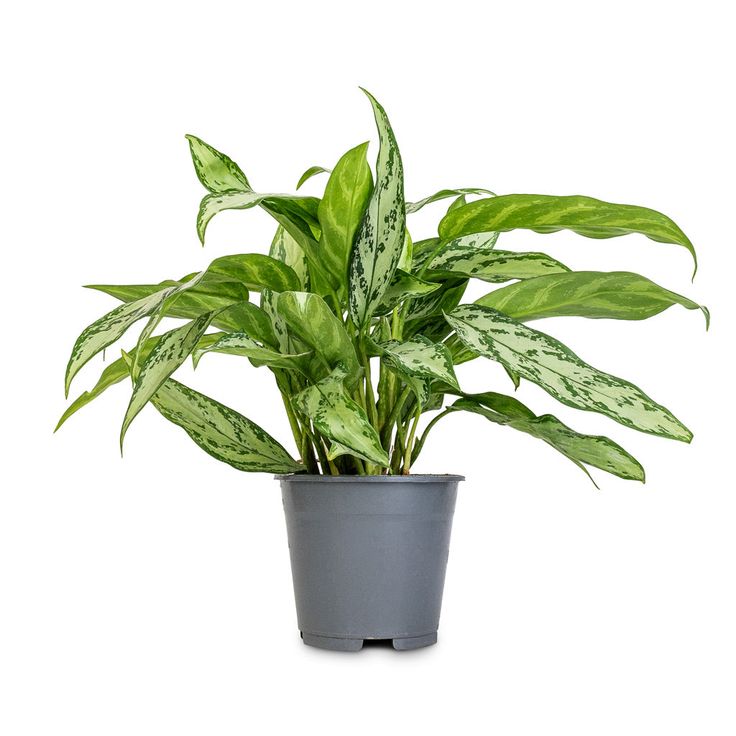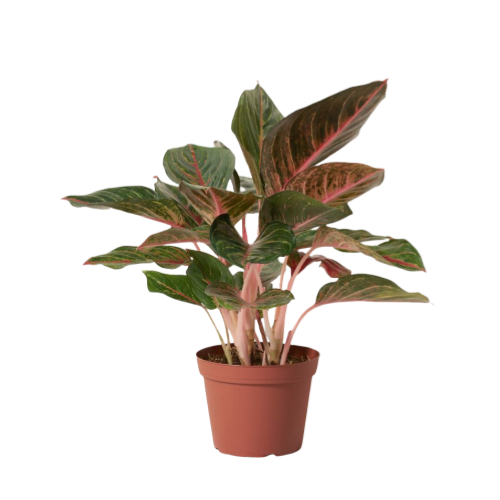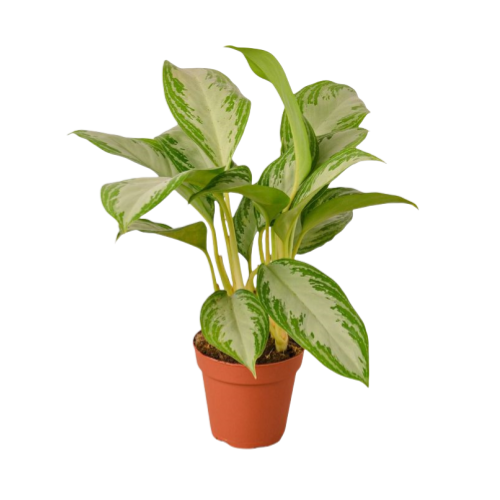Aglaonema Whero Whero
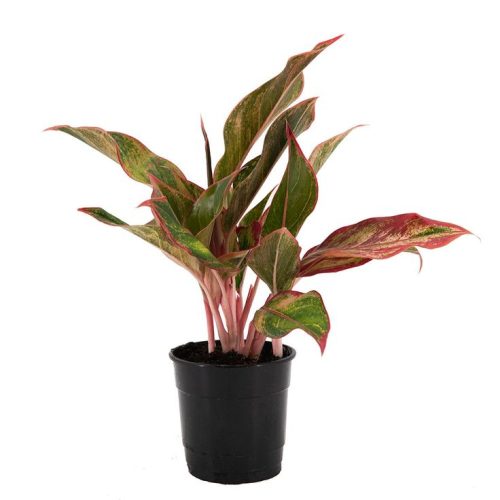
- Botanical Name: Aglaonema Comutatum 'Valentine Whero'
- Family Name: AracEAE
- Kakau: 1-2 Feet
- Te pāmahana: 15°C~27°C
- Others: Tolerates shade and avoids direct sunlight.
Tirohanga whānui
Whakaahuatanga Hua
Ko te Valentine Whero Whero Whero: Ko te Poari Turtical o te Kariki o roto
Aglaonema Whero Whero: Ko te ahumoana te whakamatautauranga i te ahua wera whero
Pakiaka tropical, aroha whero
Aglaonema Red Valentine, with its striking red leaves, is a popular indoor plant known scientifically as Aglaonema ‘Red Valentine’, belonging to the Araceae family, which includes many common indoor plants famous for their unique shapes and diverse leaf colors. Hailing from the tropical regions of Asia, particularly in Indonesia, the Philippines, and some islands in the South Pacific, this plant thrives in climates that mimic its origins. As a hybrid cultivar, Aglaonema Whero Whero i tohua te tuku i tona kopu i te reihi whero, he ahua pai mai i te tikanga.
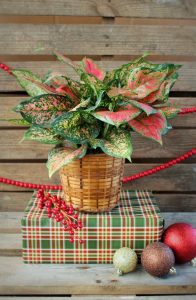
Aglaonema Whero Whero
Whakama i te ra, ka ora i te atarangi
Ka tae ana ki ona tikanga tipu, ka pai ake te valentine whero aglaonema ki te mahana me te tino mahana, te whakahāngai me ona pakiaka ahuwhenua. Ka taea e ia te whakariterite ki nga tautuhinga o roto engari ka karo i te rereketanga o te pāmahana. Ko te whānuitanga o te pāmahana pāmahana nui te tipu i waenga i te 15 ° C me te 27 ° C He pai te tipu o tenei tipu mo te atarangi ka taea te tipu i roto i nga tikanga o roto-iti noa iho engari ko te maama ano hoki, he maama noa iho. Heoi, ka maarama te maarama o te ra, ka taea e arahi ki te rau, ina koa i nga marama o te raumati wera.
He teitei te teitei o te huatau
Growing up to 2 to 3 feet tall, or about 60 to 90 centimeters, Aglaonema Red Valentine is a medium-sized indoor plant. Its large, glossy leaves boast a range of colors from deep red to pink, depending on light conditions and the plant’s health. Overall, with its distinctive red leaves and tropical charm, Aglaonema Red Valentine has become a hot pick for indoor decoration. Its growth habits and adaptability make it an attractive and easy-to-care-for indoor plant.
The Red Valentine’s Colorful Charm: A Glimpse into the Heart of Aglaonema
Te ataahua o te kuini whero
Aglaonema Red Valentine, scientifically known as Aglaonema commutatum ‘Red Valentine’, belongs to the Araceae family. This plant is renowned for its distinctive red foliage, with heart-shaped leaves that display a vibrant tapestry of colors, featuring a pink center and emerald green edges, creating a natural artwork that is truly captivating. Its leaves are elongated and colorful, with large areas and a plant height of about 30-40 centimeters. The stem is upright, and the leaf color is festive, maintaining a red-hot appearance throughout all four seasons, symbolizing good fortune and happiness.
Tuhinga o mua
The variation in leaf color is primarily related to the biosynthesis of anthocyanins. Transcriptome analysis reveals the biosynthetic genes and transcription factors associated with anthocyanin biosynthesis in the leaves of Aglaonema commutatum ‘Red Valentine’. At all three developmental stages, the transcripts per million (TPM) values of ‘Red Valentine’ are significantly higher than those of the green mutant, consistent with the high anthocyanin content in the leaves of ‘Red Valentine’. Anthocyanins are the main plant pigments that give plants their red, purple, or blue colors.
In the ‘Red Valentine’ variety, we find that anthocyanins accumulate mainly in the mesophyll tissue, while chlorophyll is present in both the spongy tissue and the mesophyll. Additionally, plant hormones such as ABA and Jasmonates (JAs) can induce anthocyanin accumulation by regulating anthocyanin-related genes. Therefore, factors such as light, temperature, water, and plant hormones can all influence the content of anthocyanins in the leaves of Aglaonema Red Valentine, thereby affecting the variation in leaf color.
Aglaonema Whero Whero: He Korero Korero mo nga Waahanga Motuhake
Aglaonema Red Valentine, with its vibrant red foliage, is a versatile plant that enhances various settings from home interiors to commercial spaces. It brings a tropical elegance to living rooms and offices, boosting energy and creativity, while its low-maintenance nature appeals to busy homeowners and office workers. Thriving in low light, it’s ideal for spaces lacking direct sunlight.
I roto i nga whakatipuranga arumoni penei i nga hotera me nga wharekai, ka hangaia he hau mahana, me nga waahanga o te iwi, he whakaheke i te awangawanga me te whakanui i te ahotea me te whakanui i te ahotea. Ko tona mana me tona ataahua ka waiho hei whiriwhiri rongonui mo nga tono noho noho me nga tauhokohoko.





